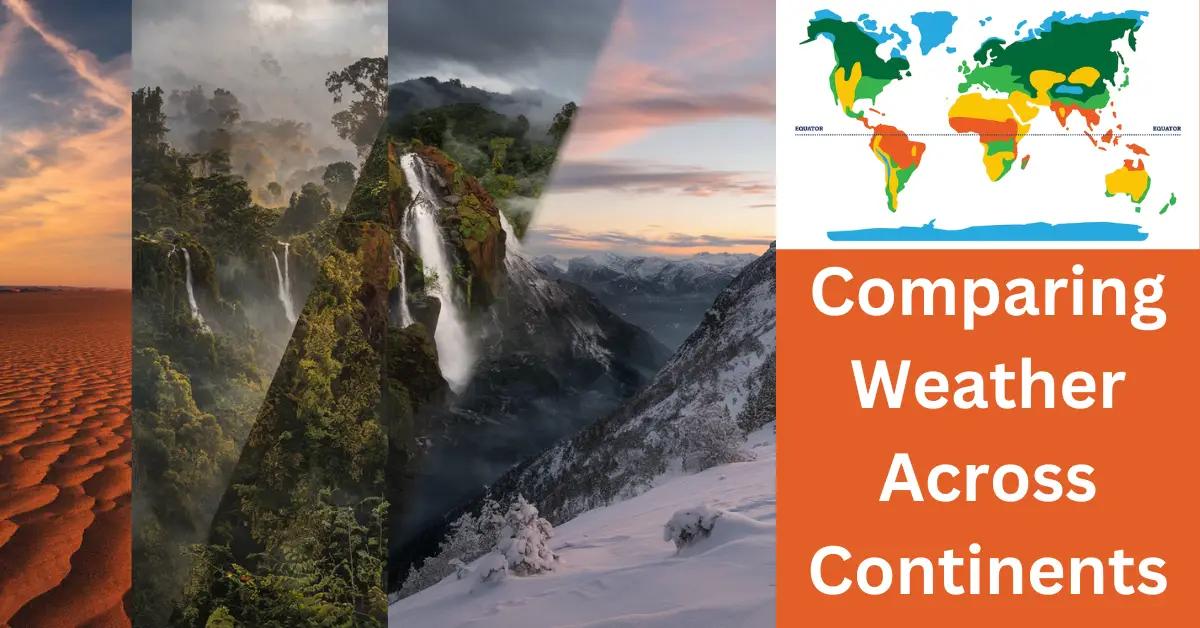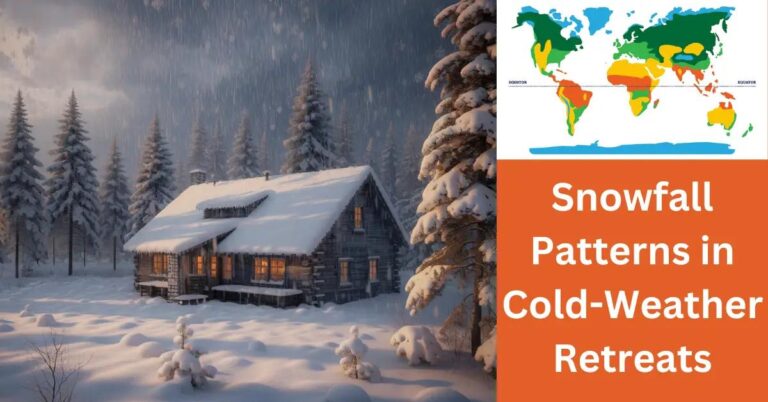TL;DR:
- Weather differs globally due to factors like climate zones and Earth’s tilt.
- The tropics are warm year-round; European climates experience four seasons.
- Africa is predominantly hot and dry, with the Sahara Desert, the largest hot desert.
- Temperatures vary per continent, e.g., cold Siberia vs. hot southern India.
- Ocean and wind currents, like the Gulf Stream, impact climates by relocating heat and moisture.
- Each continent showcases climate diversity: Africa offers deserts and rainforests; Europe has Nordic cold and Mediterranean warmth.
- Seasonal changes affect health: risks include heatstroke and hypothermia.
- Understanding climate diversity enhances our appreciation of global environmental intricacies and helps address health-related weather challenges.
Expat life can be a weather rollercoaster. From steamy deserts to freezing tundras, each continent struts its climate charms. Ever wondered why Africa sizzles while Europe chills? I'm here to break it all down. We'll explore which continents are hot and dry, and learn how seasons shake things up globally. Get ready to dive into the diverse dance of global weather patterns. Let's unpack the world's climates and get you weather-wise!
How is weather different around the world?
Weather varies greatly across our world. Many factors shape these differences. First, let’s explore how climate zones differ. Each continent can have many climate zones. These zones include tropical, temperate, arid, and polar regions. They affect how warm or cold it is.
So, [how is weather different around the world](external link source)? The tropics, near the equator, stay warm all year. While places like Africa may be hot and dry, Europe, with its temperate climate, experiences four distinct seasons. This variation is due to Earth’s tilt and orbit around the sun.
Temperature also varies by continent. For example, in Asia, Siberia can get very cold, while southern India stays hot. In North America, the coastal areas remain milder than inland areas, which face extreme cold and heat. The ocean helps balance temperatures, keeping coastal regions more stable.
Global weather systems influence climates. Wind and ocean currents distribute heat and moisture around the planet. The Gulf Stream, for example, carries warm water from the Gulf of Mexico to the North Atlantic, warming parts of Europe. Meanwhile, the monsoon winds bring heavy rains to South Asia.
Different climate zones have unique weather systems. Polar regions are cold with ice and snow. Their weather has a huge effect on the global climate. Tropical areas, with rainforests, get heavy rain. Deserts, however, are dry with occasional rain.
Knowing these facts helps us understand our world’s weather. Various climates create diverse environments, impacting life and nature. This diversity in climates and weather systems makes each continent unique, offering a rich tapestry of global climate differences. Learning about this helps us appreciate our planet more and recognize how interconnected it all is.
Which Continent is Hot and Dry for Most of the Year?
Africa is mostly hot and dry. Vast spaces of sand and sun stretch across regions. In fact, Africa contains the Sahara, the largest hot desert on Earth. But Africa has more than just desert. The arid and semi-arid zones rule here. The Kalahari and Namib Deserts show the many types of dry lands.
You might wonder what makes a place so dry. The answer lies in its size and topography. Huge deserts form due to high-pressure systems above them. These systems block rain. Mountains in some spots also stop moisture from other areas. As a result, little water means scant plant life. The land stays dry and sandy as far as you can see.
Though hot all year, these areas put other desert regions to the test. Other continents, like Asia, with its Gobi Desert, also feature heat and dryness. But Africa stands out for its desert size and expanse. A comparative analysis puts Africa at the top in this category. Each desert on this vast continent has its own feel. Sand dunes, rocky plains, and dry valleys highlight the variety in Africa's deserts.
In many ways, Africa's deserts help us understand global climate differences. The role of topography in shaping these regions is huge. From low plains to high plateaus, every inch matters. Sandy deserts feature high daytime heat and cool nights. Rockier zones might hold heat longer, altering local weather. Through the lens of continent-specific weather patterns, Africa is a world leader in arid myths and realities. So when looking for a land with a hot, dry vibe, look no further than Africa, where the sands whisper stories of ancient winds and endless horizons.
What Continent Has Different Climates?
Africa has a range of climate zones on a single continent. In the north, you will find the vast Sahara Desert, known for its hot and dry climate. This desert region contrasts sharply with the tropical rainforest of Central Africa. There's heavy rain and dense greenery in these forests. Would you believe the same continent has such diversity?
Moving to Europe, we find another example of climate variety. Europe hosts the chilly Nordic regions, warm Mediterranean coasts, and temperate woodlands. Each region has its own weather patterns, shaping the local lifestyles. Seasons change temperature and rainfall, making life interesting and varied.
What about the Americas? North America shows off its range of climes, from Alaska's icy cold zones to the warmth of Mexico's deserts. In Eurasia, Russia's chill contrasts with subtropical areas found in southern China. These changes affect what plants and animals can survive in those places. Continent-specific weather patterns shape biodiversity in each area.
Now, let's talk about how changing seasons influence health. Places with extreme weather can make people sick. In hot zones, heatstroke and dehydration are risks. Cold climates pose dangers like hypothermia. The mix of climates on some continents means health risks change as you move.
Case studies offer insight into climate-related health hazards. Consider malaria, common in tropical zones like those in Africa. It's rare elsewhere. Cold places have their own challenges, like frostbite. By understanding these risks, we can seek better ways to stay safe and healthy.
Diverse climates make our world beautiful and complex. Learning about them helps us appreciate the planet and prepare for different weather anywhere we might live or travel.
Conclusion
We explored how weather differs worldwide, focusing on climate zones and temperature shifts by continent. We examined how specific weather patterns shape diverse climates and their global effects. Understanding these differences helps you better adapt to new environments. By grasping how weather works in various regions, you can prepare for challenges and embrace local life. Whether facing heat in a desert or diverse climates in continents like North America, stay informed and engaged. Your journey continues with knowledge of the global climate, aiding smoother transitions and deeper connections in your new home.












